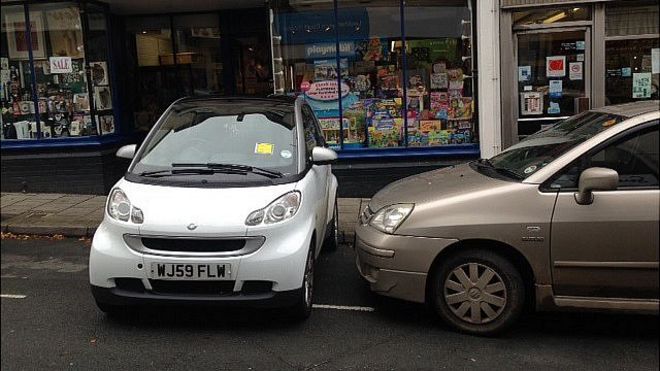HITTING THE BRAKES
Law gets serious about cycling safety
by Masaaki Kameda
Staff Writer
Bicycle use is growing along with greater public awareness of health and environmental issues, with cities around the country beginning to rent them out to visitors who are eager to tour Japan on the cheap.
But this has triggered a rise in fatal accidents caused by reckless cyclists, who are often taken to court and ordered to pay tens of millions of yen in damages for their transgressions.
The revised Road Traffic Law took effect June 1 to get a handle on the problem by penalizing cyclists who flout the rules of the road and forcing them to take safety courses if they fail to improve.
Let’s take a closer look at the government’s effort to crack down on risky cyclists.
How many bicycles are there and why are people riding?
According to the National Police Agency, there were 71.551 million bicycles in Japan in 2013, compared with 27.643 million in 1970.
A survey carried out by a transport ministry-affiliated research institute found that 42 percent of the 1,945 respondents said they ride regularly to stay fit and offset the lack of serious exercise, while 41 percent do so to cut their commuting or gasoline bills, and 9 percent do so to help the environment.
Are cycling-caused accidents on the rise?
No, but the ratio of fatal accidents is surging.
According to NPA figures, cyclists caused 109,269 accidents last year, down from 188,338 in 2004, while fatal accidents fell to 542 from 870 a decade ago. But the ratio of fatal accidents to the whole actually rose 1.3 points to 13.5 percent over the period. The fatalities, which included pedestrians, other cyclists or the cyclists themselves, rose to 82 from 51 in 2004.
Of the 106,427 deaths and injuries, 67,876, or 63.8 percent, were linked to traffic violations such as ignoring traffic lights or stop signs.
Why was the law amended?
The government wants to curb traffic violations that could lead to serious or fatal accidents.
Because of the surge in the ratio of fatal accidents caused by cyclists, the central government revised the law so that it classifies 14 types of traffic offenses and requires negligent cyclists to take safety lessons.
The offenses include ignoring traffic lights, passing under railway crossing gates when they are down, failing to stop at intersections where required, riding without properly working brakes and cycling while drunk. They also include violations of other safety regulations, such as cycling while using mobile phones, listening to music through earphones or holding an umbrella.
But the regulations can differ from place to place, since they vary by municipality or are set by local public safety commissions.
Cyclists are concerned that certain regulations are too ambiguous and give police too much leeway to charge them with traffic violations.
What do the new penalties involve?
The police can issue tickets to cyclists who are 14 or older. If you get two or more in a three-year period, you would be required to take a safety lesson similar to the one imposed on car, truck and motorcycle drivers.
The mandatory safety lesson takes three hours and costs ¥5,700. Cyclists who refuse will be fined up to ¥50,000.
The lesson, which can be taken at driver’s license centers and prefectural police headquarters, involves studying traffic rules, reading accounts written by errant cyclists, and accounts written by the victims or their relatives.
What are the consequences of serious cycling accidents?
Cyclists involved in accidents resulting in severe injury or death can impose enormous financial penalties on themselves and their families.
In July 2013, the Kobe District Court ordered a mother to pay ¥95 million in damages after her son hit a 67-year-old woman while riding his bicycle on a hill in Kobe, leaving her bedridden.
In January 2014, the Tokyo District Court ordered a male cyclist to pay ¥47 million in damages to the family of an elderly pedestrian he hit and killed after running a red light.
In response, the Hyogo Prefectural Assembly in March adopted an ordinance requiring cyclists to buy liability insurance, becoming the first prefecture in the nation to do so.
Last Thursday, the Tokyo public safety commission suspended the driver’s license of a man who drunkenly cycled across a busy street at a place where there was no crossing in January and crashed into a motorcycle, killing the driver.
The accident thus gave the commission reason to judge that the cyclist posed a danger as a motorist as well.
What other measures are being considered to curb bicycle-related fatalities?
Some governments, including Ehime Prefecture and the city of Sakai in Osaka Prefecture, have introduced ordinances calling for cyclists of all ages to wear helmets, rather than just children 12 and under who are encouraged to do so under the Road Traffic Law.
Experts say that the central and regional governments should also improve the transportation environment for cyclists, including by creating more cycling lanes to improve safety and help them abide by the rules.
A 2011 questionnaire conducted by the NPA found that 58 percent of the 790 respondents said they cannot abide by the traffic rules while cycling because of bad traffic conditions.













